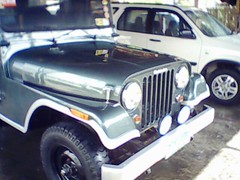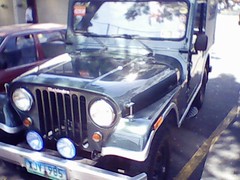The History of Francisco Motors Corporation
Francisco Motor Corporation (FMC)


In 1947 Anastacio Francisco estabilished a small painting shop in Zapote, Las Pinas with a starting capital of Php 200.00 that specialized in painting jeepneys, cars and trucks. Four years later, the small painting shop became the Francisco Body Builder (FBB) which engaged in the building of jeepney bodies. It became known as reputable body builder with clients coming to the shop for the unique body designs from surplus jeepneys left after the war. By 1955 FBB ventured into assembling a complete line of jeepneys using reconditioned engines from Japan. Also in the same year, the Luneta Motor Company became the company’s first distributor of FBB bodies. This marketing relationship continued to blossom and Luneta Motor Company – which was the franchised distributor of English Ford cars and Thames trucks – partnered with FBB to assemble Ford Consul and Thames light trucks.
The company was incorporated in 1960 and was to be known by its present name: Francisco Motor Corporation. As is its name continued to firmly established in the local automotive industry, FMC was appointed by Isuzu Motors Co., Ltd. of Japan as the franchised assembler and distributor of the Isuzu Bellett Cars in the Philippines. By 1968, FMC assembled Isuzu Elf trucks and continued its partnership with Isuzu until 1974. With its partnership with Isuzu, FMC introduced Isuzu diesel engines for the locally distributed jeepneys. FMC continued to dominate the jeepney market with its partnership with Isuzu of Japan.
Due to changes in the local market, FMC next partnered with Mazda for a new line of lights trucks for the commercial use. This proved to be successful and FMC broadened its partnership with Mazda for other commercial vehicles as well as the provision of engines for its locally produced jeepneys and minibuses. The continued partnership with Mazda allowed FMC to actively participate and pioneer the development of the Asian Utility Vehicle under the government’s Progressive Truck Manufacturing Program. This resulted in the introduction of the Pinoy I, a Mazda 1200 cc powered vehicle. Further inprovements on the Pinoy and a new version was introduced in 1979 as the Pinoy II. At the same time, jeepney production reached 14,900 units. For the same period, FMC annual production reached 5,000 units per year and employed 2,000 employees in two manufacturing plants.
As the company moved into the turbulent 80s, FMC joined the Commercial Vehicle Development Program, which replaced the Marcos-era PTMP under the Board of Investments. Under the program FMC to developed the ANFRA – a third generation Asian Utility Vehicle that was mainly used for commercial use. By the 1990s. FMC emerged as one of the largest and only locally owned manufacturer and assembler of vehicles in the Philippines, with over 60,000 units sold. It further expanded into the assembly and distribution of small engine displacement cars under license from Fiat of Italy. As the contract with Fiat expired, FMC tied up with Hyundai of Korea to assemble and distribute Hyundai-brand cars and vans.
As the 1990s closed, FMC had been a strong player in the local automotive market, however, due to the Asian financial crisis of 1997, the company had experienced ao series of setbacks that affected the financial viability of the company after more than 50 years of continued operations and growth. By 2002 the company had filed for rehabilitation due to losses incurred in its operations. The economy was devastated by the financial crisis and FMC was not spared.

0 Mga Komento:
Mag-post ng isang Komento
Mag-subscribe sa I-post ang Mga Komento [Atom]
<< Home